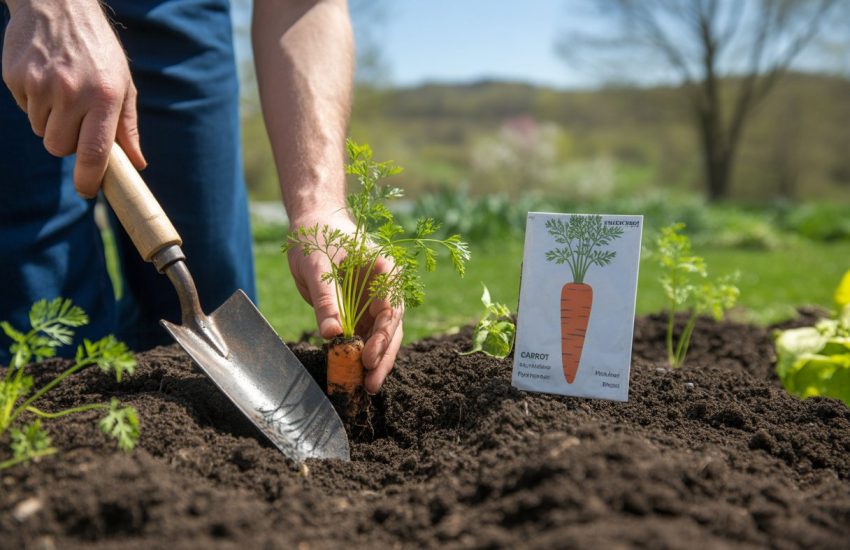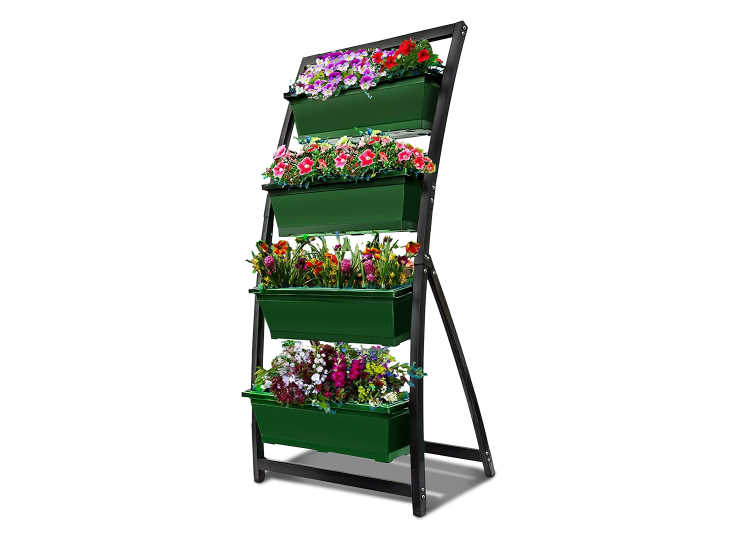How to Propagate Schefflera: A Clear Guide
Schefflera, also known as umbrella tree, is a popular houseplant that can add a touch of greenery to any room. Propagating schefflera is a great way to expand your collection or share the plant with friends and family. With the right techniques, propagating schefflera can be a simple and rewarding process.
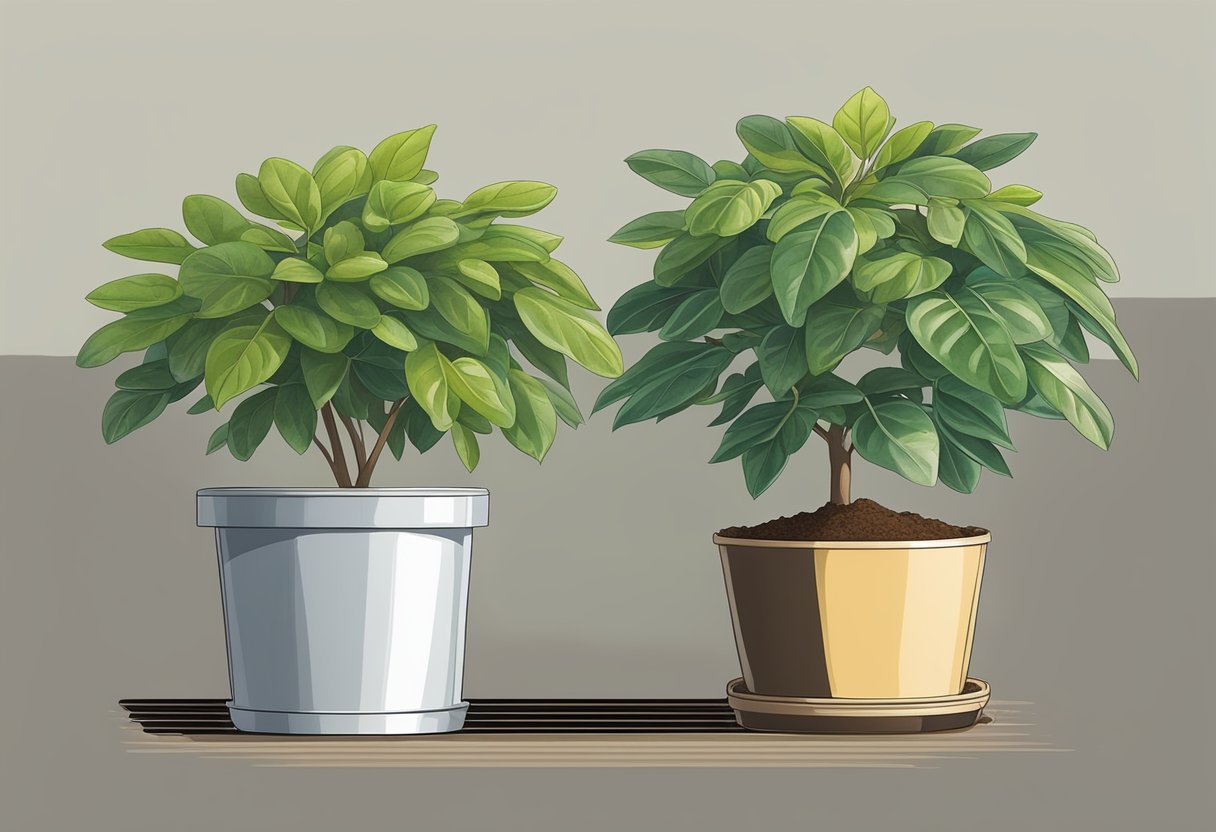
One of the easiest ways to propagate schefflera is through stem cuttings. This involves taking a cutting from the parent plant and encouraging it to root and grow into a new plant. Another method is air layering, which involves creating a small cut in the stem of the parent plant and encouraging roots to form in a moss-filled pouch. Both methods can be successful with the right care and attention. In this article, we will explore the best techniques for propagating schefflera and how to care for the new plants.
Understanding Schefflera
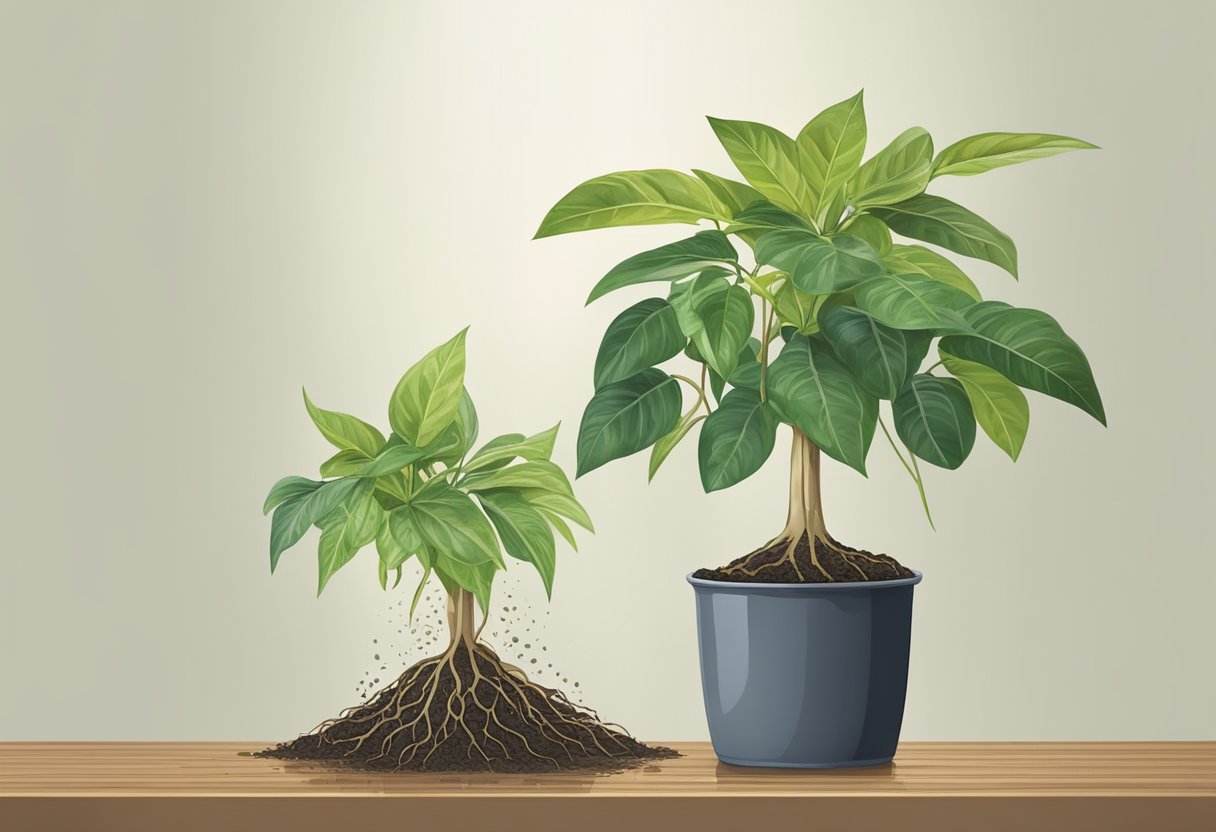
Characteristics of Schefflera
Schefflera, also known as the umbrella plant, is a popular tropical plant that belongs to the Araliaceae family. It is native to Taiwan and Hainan, but it is now widely cultivated in many parts of the world. Schefflera is an evergreen plant that can grow up to 15 feet tall, but dwarf varieties are also available that can be grown indoors.
Schefflera has distinctive features that make it easy to identify. It has large, glossy, green leaves that are arranged in a circular pattern around the stem. The leaves are usually oval-shaped with pointed tips and can grow up to 12 inches long. The plant also produces small flowers that are arranged in clusters and can be either white or green.
The Schefflera Family
Schefflera belongs to the Araliaceae family, which is a large family of flowering plants that includes over 1,200 species. The family is mainly distributed in the tropics and subtropics, and many of its members are popular ornamental plants. Some of the other well-known members of the Araliaceae family include the ivy, the ginseng plant, and the Japanese aralia.
The Araliaceae family is characterized by its distinctive leaves, which are usually large and compound. The flowers are small and arranged in clusters, and the fruits are usually small and fleshy. Many members of the family are used in traditional medicine, and some are also used in the production of essential oils.
In conclusion, understanding the characteristics and family of schefflera is important for successfully propagating and caring for this popular tropical plant. By using proper techniques and providing the right growing conditions, schefflera can thrive and add a touch of tropical beauty to any indoor or outdoor space.
Preparation for Propagation
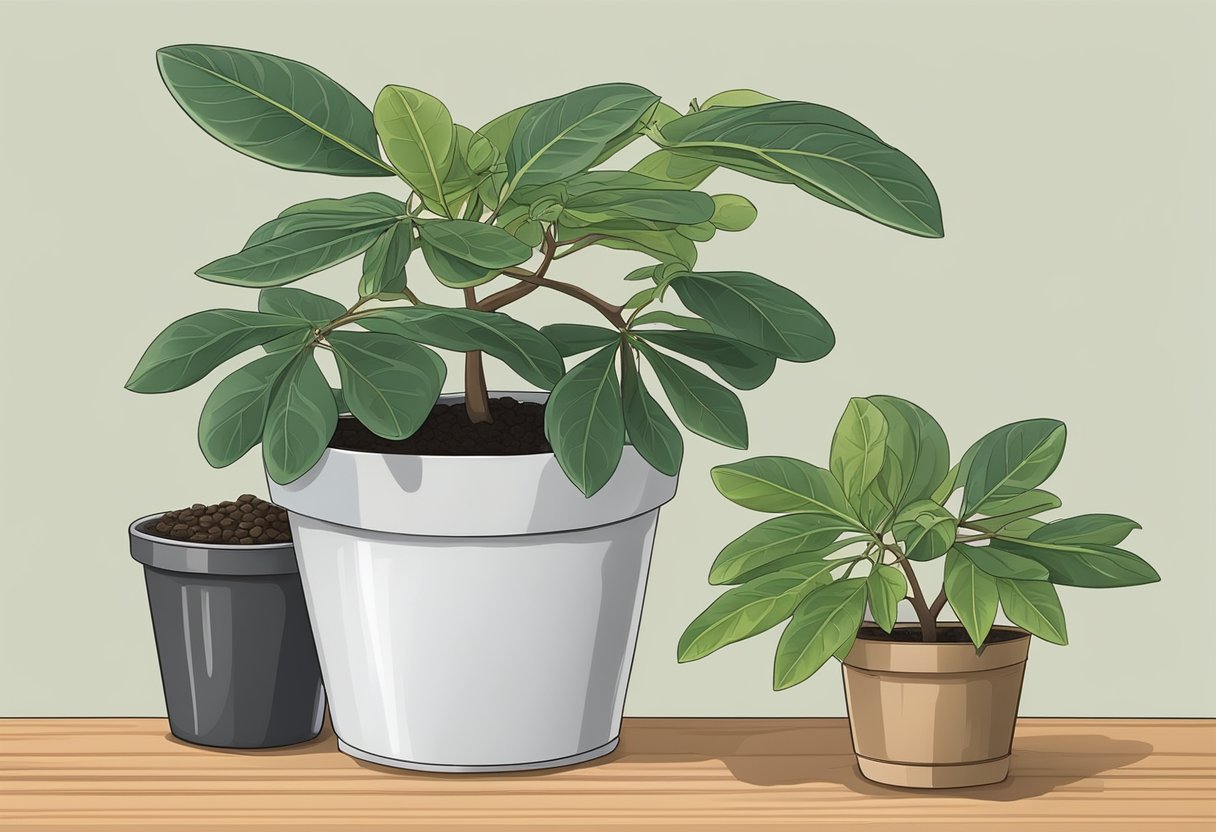
Selecting a Healthy Parent Plant
Before propagating schefflera, it is important to select a healthy parent plant. Look for a plant with a strong stem and healthy leaves. Avoid plants with yellow or brown leaves, as this may indicate disease or pest problems. It is also important to choose a plant that has not been recently pruned, as this may affect the plant’s ability to produce new growth.
Tools and Materials Needed
In order to propagate schefflera, you will need a few tools and materials. These include pruning shears, rooting hormone, and a sterilizing/disinfectant solution. Pruning shears should be sharp and clean, as dull or dirty shears can damage the stem and increase the risk of disease. Rooting hormone is used to encourage root growth in the cutting. The sterilizing/disinfectant solution is used to clean and disinfect the tools and materials to prevent the spread of disease.
To sterilize your tools and materials, mix a solution of one part bleach to nine parts water. Soak the tools and materials for at least five minutes, then rinse with clean water and allow to air dry. This will help to kill any bacteria or fungi that may be present on the tools or materials.
By following these simple steps, you can ensure that your schefflera cuttings have the best chance of success. Remember to always use healthy plants and clean, sterilized tools and materials to prevent the spread of disease. With a little patience and care, you can successfully propagate schefflera and enjoy new plants for years to come.
Propagation Techniques
Schefflera is a popular houseplant that can be propagated through a variety of methods. In this section, we will discuss three common propagation techniques: soil propagation, water propagation, and air layering.
Soil Propagation Method
The soil propagation method involves taking stem cuttings from the parent plant and rooting them in soil. To do this, select a healthy stem and make a clean cut just below a node. Remove the lower leaves from the stem, leaving only a few at the top. Dip the cut end of the stem in rooting hormone and plant it in moist potting soil. Keep the soil moist and place the cutting in a warm, bright location. In a few weeks, roots should begin to form, and new growth will emerge from the top of the stem.
Water Propagation Method
The water propagation method is similar to soil propagation, but instead of rooting the cutting in soil, it is placed in water. Take a stem cutting as described above, and place it in a jar or vase filled with water. Change the water every few days to keep it fresh. After a few weeks, roots should begin to form, and new growth will emerge from the top of the stem. Once the roots are several inches long, the cutting can be planted in soil.
Air Layering Technique
The air layering technique is a more advanced propagation method that involves creating a new plant from a branch while it is still attached to the parent plant. To do this, select a healthy branch and make a small cut in the bark. Apply rooting hormone to the cut, and wrap the area with moist sphagnum moss. Cover the moss with plastic wrap and secure it in place with tape. Keep the moss moist, and in a few weeks, roots should begin to form. Once the roots are well-established, cut the branch below the rooted area and plant it in soil.
By following these propagation techniques, you can easily propagate schefflera and enjoy more of these beautiful plants in your home.
Taking and Preparing Cuttings
Making the Cut
To propagate schefflera, taking stem cuttings is the most common and effective method. The ideal time to take cuttings is in the spring or early summer when the plant is actively growing. Choose a healthy stem with at least two or three sets of leaves and a growth node. Using a sharp, sterilized pruning tool, make a clean cut just below the node. The cutting should be about 4-6 inches in length.
Applying Rooting Hormone
After taking the cuttings, it is recommended to apply rooting hormone to encourage root growth. Rooting hormone can be found at most garden centers or online. Dip the cut end of the stem into the rooting hormone and tap off any excess. This will help to speed up the rooting process and increase the chances of success.
Once the cutting has been prepared, it can be planted in a well-draining potting mix. Make a hole in the soil and insert the cutting, making sure that the bottom node is covered with soil. Water the cutting thoroughly and cover it with a plastic bag to create a humid environment. Keep the cutting in a warm, bright location, but out of direct sunlight.
By following these simple steps, anyone can propagate schefflera successfully. With a little patience and care, you can create new plants from your existing schefflera and enjoy the beauty of these tropical plants in your home or garden.
Creating the Right Environment for Propagation
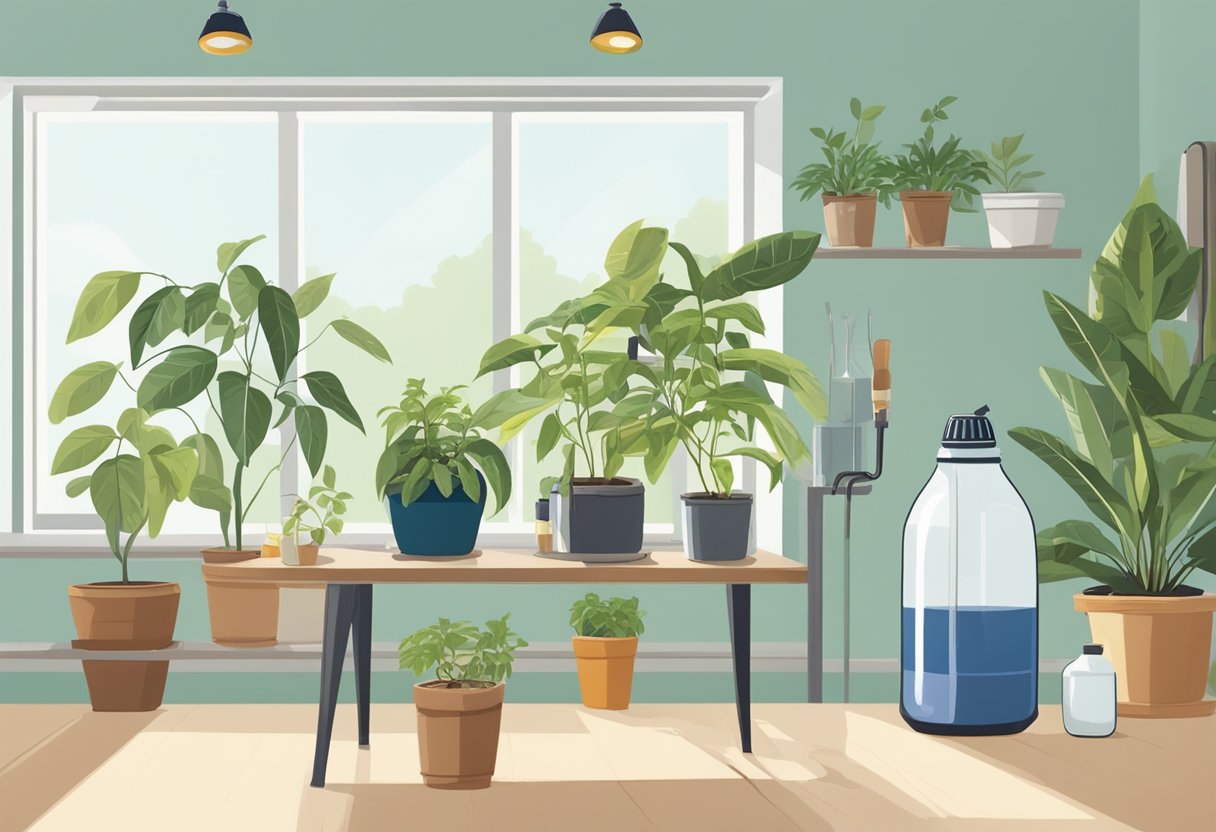
When propagating schefflera, creating the right environment is crucial for success. This section will cover two important factors to consider: light and temperature, as well as humidity and moisture.
Light and Temperature
Schefflera plants prefer bright, indirect light. Direct sunlight can scorch the leaves and cause damage to the plant. Therefore, it is recommended to place the plant in a location that receives bright, indirect light.
Temperature is also an important factor to consider when propagating schefflera. The ideal temperature for propagation is between 65-75°F (18-24°C). Avoid placing the plant in a location that is too hot or too cold as this can negatively impact the growth of the plant.
Humidity and Moisture
High humidity is essential for successful propagation of schefflera. One way to increase humidity is to place the plant in a plastic bag or cover it with a plastic wrap. This creates a greenhouse effect and helps to retain moisture around the plant.
Moisture is also important for successful propagation. Keep the soil moist but not waterlogged. Overwatering can lead to root rot and ultimately kill the plant. It is recommended to water the plant when the top inch of soil feels dry to the touch.
By creating the right environment for propagation, you increase your chances of success when propagating schefflera. Remember to provide bright, indirect light, maintain the ideal temperature, increase humidity, and keep the soil moist but not waterlogged.
Caring for New Schefflera Plants
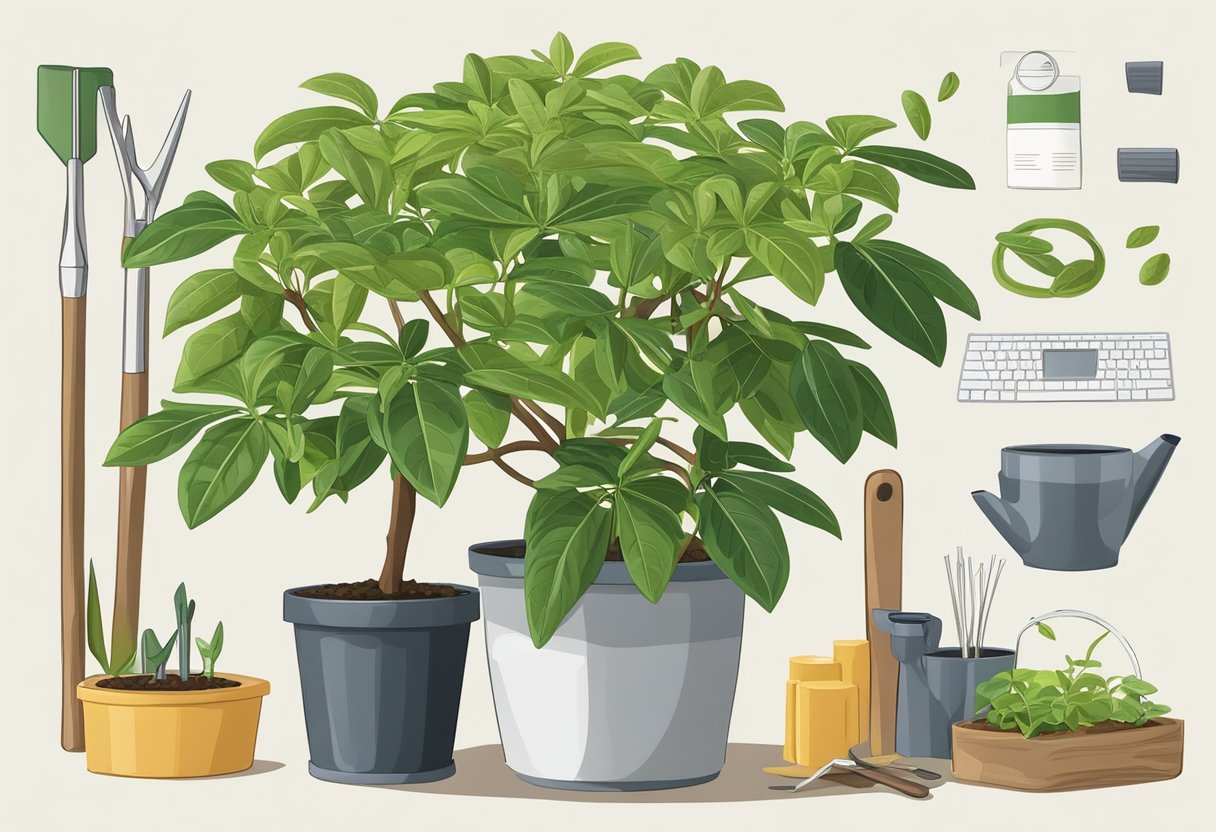
Once you have successfully propagated your schefflera, it’s important to provide it with proper care to ensure its growth and health. In this section, we will discuss the key aspects of caring for new schefflera plants.
Watering and Feeding
Watering is an essential aspect of caring for new schefflera plants. It’s important to keep the soil moist, but not waterlogged. Overwatering can lead to root rot and other issues. It’s recommended to water the plant when the top inch of soil feels dry to the touch.
Feeding your schefflera with a balanced fertilizer can also promote healthy growth. It’s recommended to fertilize your schefflera once a month during the growing season (spring and summer) and reduce the frequency during the dormant season (fall and winter).
Transplanting and Potting
As your schefflera grows, it may outgrow its current pot. Transplanting it into a slightly larger pot can provide it with more room to grow. It’s recommended to transplant your schefflera every 2-3 years.
When transplanting, be sure to use a well-draining potting mix that is suitable for houseplants. A small pot can restrict root growth, so it’s important to choose a pot that is slightly larger than the current one.
Monitoring for Growth and Health
Regularly monitoring your schefflera for growth and health can help you identify any issues early on. Check for signs of pests, such as spider mites or mealybugs, and treat them promptly.
It’s also important to monitor the soil moisture level and adjust your watering frequency accordingly. If your schefflera is not growing as expected, it may need more light or fertilizer.
By following these tips, you can provide your new schefflera plant with the care it needs to thrive and grow into a beautiful, healthy plant.
Common Issues and Solutions

Dealing with Pests and Diseases
Schefflera plants can be susceptible to pests and diseases, which can cause damage to the leaves and stems. Common pests that can affect schefflera include spider mites, scale insects, and mealybugs. These pests can be controlled by using insecticidal soap or neem oil. It is important to follow the instructions on the label and to apply the product to both the upper and lower surfaces of the leaves.
In addition to pests, schefflera can also be susceptible to diseases such as leaf spot and powdery mildew. These diseases can be caused by overwatering or high humidity levels. To prevent these diseases, it is important to avoid getting water on the leaves and to ensure that the soil is well-draining. If the plant does become infected, it may be necessary to remove affected leaves and treat the plant with a fungicide.
Preventing Root Rot and Other Problems
One of the most common problems with schefflera is root rot, which is caused by overwatering or poor drainage. To prevent root rot, it is important to allow the soil to dry out slightly between waterings and to ensure that the pot has adequate drainage. If the plant does become infected with root rot, it may be necessary to repot the plant in fresh, well-draining soil and to trim any affected roots.
Another issue that can affect schefflera is mutations, which can cause the plant to produce abnormal growth or variegation. While mutations can be interesting to observe, they can also weaken the plant and make it more susceptible to pests and diseases. To prevent mutations, it is important to ensure that the plant is grown in appropriate conditions and to avoid exposing the plant to extreme temperatures or fluctuations in light levels.
Additional Tips for Successful Propagation
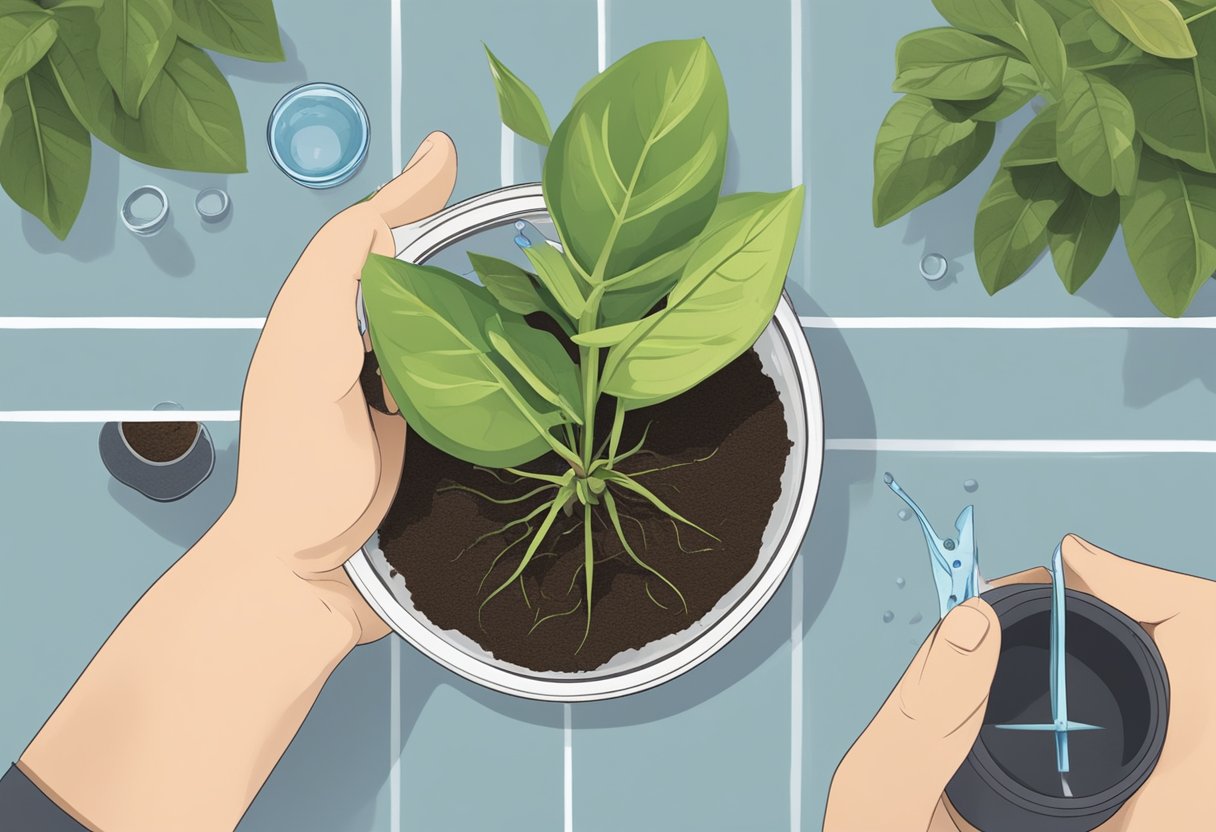
Best Time of Year to Propagate
Schefflera can be propagated at any time of the year, but the best time is during the spring or summer months. During these months, the plant is actively growing and producing new shoots, making it easier to take cuttings. The warmer temperatures and longer days also help to promote faster rooting.
Maintaining Parent Plants
To ensure successful propagation, it is important to maintain healthy parent plants. This involves regular watering, fertilizing, and pruning. Water the parent plant when the top inch of soil is dry to the touch, and fertilize every two weeks during the growing season with a balanced fertilizer. Prune the parent plant regularly to encourage new growth and to prevent it from becoming too leggy.
It is also important to inspect the parent plant for any signs of pests or disease. If any issues are found, they should be treated promptly to prevent them from spreading to the cuttings.
By following these additional tips, gardeners can increase their chances of successfully propagating schefflera. For more gardening tips and tricks, subscribe to our newsletter.
Frequently Asked Questions

What are the steps to propagate a Schefflera using water?
To propagate a Schefflera using water, cut a stem with at least two leaves and place it in a jar of water. Change the water every few days to prevent bacteria growth and keep the plant in a bright, indirect light. After a few weeks, roots will start to grow, and the plant can be transferred to soil.
How can I propagate a Schefflera in soil?
To propagate a Schefflera in soil, take a stem cutting with at least two leaves and dip the cut end in rooting hormone. Plant the cutting in a pot filled with well-draining soil and keep the soil moist but not waterlogged. Place the pot in a bright, indirect light and wait for roots to develop.
Is it possible to propagate a Schefflera from a single leaf?
It is not possible to propagate a Schefflera from a single leaf. A stem cutting with at least two leaves is required for successful propagation.
What is the proper technique for propagating Schefflera from cuttings?
To propagate Schefflera from cuttings, take a stem cutting with at least two leaves and remove the lower leaves. Dip the cut end in rooting hormone and plant the cutting in a pot filled with well-draining soil. Keep the soil moist but not waterlogged and place the pot in a bright, indirect light.
Can you explain how to encourage branching in a Schefflera plant?
To encourage branching in a Schefflera plant, prune the stem tips to promote lateral growth. Pinch back new growth at the tips of the lateral branches to encourage bushier growth. Regular pruning will help maintain a compact and bushy Schefflera plant.
How do I care for a Schefflera during the propagation phase?
During the propagation phase, it is important to keep the soil moist but not waterlogged and provide bright, indirect light. Avoid exposing the plant to direct sunlight or cold drafts. Once the plant has established roots, it can be gradually acclimated to its final growing conditions.

